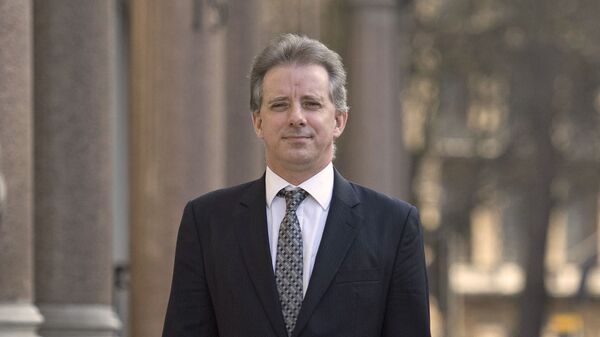On 8th July, the English and Welsh High Court ruled in favour of two Alfa Bank principals in a legal action they brought against Christopher Steele’s Orbis Business Intelligence, as falsehoods in the infamous former MI6 operative’s utterly discredited ‘Trump-Russia’ dossier breached the UK Data Protection Act.
Bring back Steele!!! https://t.co/jL5c8WF28Z
— Donald J. Trump (@realDonaldTrump) July 11, 2020
In a 53-page ruling, the court awarded the duo damages totalling around US$45,000 – and also raised serious questions about Steele’s probity and integrity, and the conduct of the US Federal Bureau of Investigation.
Liar Liar
In a particularly tantalising section, presiding Justice Warby noted making a ruling in the case faced “obstacles” as “a number of participants who were directly involved could have shed light on the questions for determination” – but he only had evidence from only one of them, namely Steele himself.
“He’s given two very different versions of events, which are mutually inconsistent in a number of respects…Steele kept few records, and most of these he did keep have been lost or destroyed. One contemporaneous record of relevance has survived: the FBI Note, recording the substance of a meeting 5th July 2016. But this only helps with some relatively minor aspects of the story. There’s little other documentation that throws any light on the facts. Much of what there is consists of press cuttings, from several months after the events to which they relate, containing hearsay from anonymous or unidentified sources. Against that background I take a cautious approach…” he stated.
Steele giving “very different versions of events” may account for why the court-mandated narrative of how the dossier came to be compiled diverges wildly from that contained in Justice Department Inspector General Michael Horowitz’s report on the origins of the FBI’s ‘Crossfire Hurricane’ probe into alleged links between the Kremlin and Trump’s campaign team, and abuse of the FISA warrant process.
Excerpts from the Reasons for Judgment in Alfa v Orbis (Christopher Steele & his 'Dossier")
— Thompson S. Hunter (@nykr59) July 8, 2020
Perkins Coie (counsel for the DNC) instructions to Steele👇 pic.twitter.com/7YhrABxrIK
That report stated Steele had just one primary source, but the opinion from earlier this week provided more insight on Steele’s sources. However, in submissions made to the London court, Steele said he had three primary sources and 20 sub-sources “all of whose identities were known to him”.
“His contacts were with the sources. He met the sources and, during the meeting, made a manuscript note of what he was told. Within a day or so, he would compile a memorandum. He kept the manuscript notes for as long as necessary for that purpose, then destroyed them. Memorandum 112 [which referred to Alfa] was based on intelligence provided by a single source and a single sub-source. Steele had a two hour meeting with the source, and wrote up the memorandum shortly after, destroying the manuscript notes,” the judgment records.
Whatever the truth of the matter, the Inspector General report documented how a source used by Steele was quizzed by FBI agents, and claimed the Orbis chief “misstated and exaggerated” their statements “in multiple sections of his reporting”. The court conversely accepted Steele accurately recorded what he was told – the reason for this is unclear, as their identity wasn’t even known to the court, and they didn’t testify at the trial.
Expecting Defeat
In an ironic twist, the ruling also notes too Steele “understood the intelligence he gathered would be used to advise the Ultimate Client on the prospect of legal proceedings and, if necessary, deployed in such proceedings to challenge the eventual outcome of the Presidential Election”.
In other words, Clinton – or at least the party she represented, and her campaign team – was well-aware she may lose the Presidential election to Trump in advance of polling day, and in addition to seeking compromising ‘dirt’ on her rival, was also looking for reasons to which to attribute her loss, other than her deep unpopularity among many Americans, including voters in traditional Democratic strongholds.
Alfa group convicts Steele of lying – opens new court method to fight Russia-hate propaganda in UK. https://t.co/uBZDyL7fUM pic.twitter.com/WNDd8mgg3N
— Dances_with_Bears (@bears_with) July 10, 2020
While no legal action challenging the election result was ever launched, as the book “Shattered: Inside Hillary Clinton’s Doomed Campaign,” by Jonathan Allen and Amie Parnes documents, within 24 hours of he Clinton’s concession speech, campaign chair John Podesta and manager Robby Mook assembled her communications team and “went over the script they would pitch to the press and the public” explaining her loss, “already, Russian hacking was the centerpiece of the argument” they record.
This strategy was immensely effective, producing relentless media coverage – an Octber 2017 study found in the 10 months since Trump’s inauguration, US TV news networks devoted 1,000 minutes out of a total 5,015 minutes of Trump administration coverage discussing since utterly discredited and disproven claims the Trump campaign may have colluded with Moscow in hacking Clinton campaign emails. MRC analysts also found more than a third of the Russia “scandal” coverage was based on anonymous sources who worked in the Obama administration, including Hillary’s State Department.



